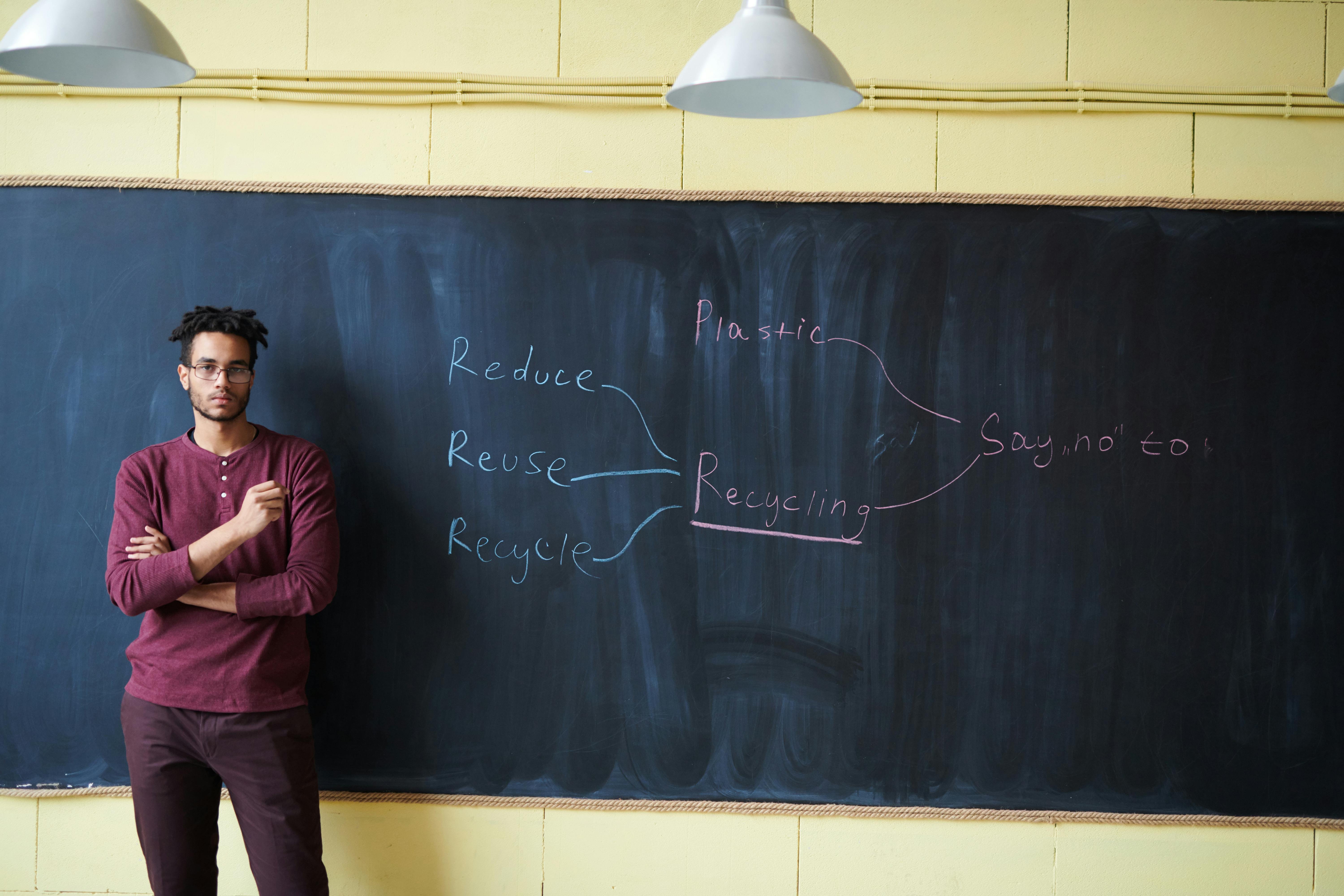Introduction
Brief Overview of the Feynman Technique
Imagine having a key that can unlock the door to any complex topic you want to understand. That's what the Feynman Technique is—a powerful tool designed to demystify the process of learning. Named after the Nobel laureate Physicist Richard Feynman, this technique pivots around the idea that the path to understanding is paved with simplicity and clarity. It's a four-step process that eschews rote memorization and instead encourages learners to grasp concepts at their core, explain them in their own words, and then refine their understanding by teaching others.
Importance of Effective Learning Strategies
In the world we live in today, information is abundant, but so are distractions. The ability to learn effectively is not just a nice-to-have skill; it's a necessity. Traditional learning methods often prioritize memorization over understanding, leaving learners stranded in a sea of facts, without a lifeboat of context or comprehension. The Feynman Technique fills this gap by emphasizing the importance of truly understanding concepts, stripping away the fluff, and focusing on the core principles.
Whether you are a student preparing for a critical exam, a professional upskilling for the next career leap, or a lifelong learner fueled by curiosity, having an effective learning strategy like the Feynman Technique can be a game-changer. It's time to dismiss the myth that learning has to be hard. With the right strategy, you can unlock your learning potential and take command of your intellectual growth.
Who was Richard Feynman?

Let's take a step back and get to know the man behind the revolutionary learning method, the Feynman Technique.
Brief biography of Richard Feynman
Richard Feynman was a Nobel Prize-winning physicist, known for his significant contributions in the field of quantum mechanics and particle physics. He was a pioneer of quantum computing, introducing the concept of nanotechnology to the world. Feynman was not just a theorist, but a renowned lecturer, having taught at prestigious institutions like Cornell and Caltech.
However, what truly distinguished Feynman was not his innate intelligence, but his relentless pursuit of understanding. He saw himself as an "ordinary person who studied hard". Feynman believed that anyone was capable of learning with enough effort, even complex subjects like quantum mechanics and electromagnetic fields. He famously said, "There's no miracle people. It just happens they got interested in this thing and they learned all this stuff. There's just people."
Feynman's approach to learning and understanding
Feynman's approach to learning was systematic. He identified the things he didn't know and then dedicated himself to understanding them inside and out. His method for considering complex concepts and distilling knowledge and ideas with elegance and simplicity is what we now call "The Feynman Technique".
According to Feynman, the key to understanding wasn't about memorizing facts but about being able to explain concepts in simple terms. In his own words, “I was born not knowing and have had only a little time to change that here and there.”
He developed a four-step process which rejected automated recall in favor of true comprehension gained through selection, research, writing, explaining, and refining. It's this technique that we explore in this article, a technique that empowers you to learn just about anything.
Feynman's approach to learning was more than a strategy, it was a philosophy that valued curiosity, simplicity, and the joy of discovery. His unquenchable thirst for knowledge and his unique method of learning form the foundation of the Feynman Technique, a revolutionary learning method that we can all apply to continuously expand our knowledge and understanding.
Understanding the Feynman Technique

Imagine having a secret superpower that could unlock the knowledge of the universe. Sounds enticing, doesn't it? Well, the Feynman Technique might not make you omnipotent, but it can certainly make learning new concepts a breeze. This technique, inspired by the Nobel laureate physicist Richard Feynman, will change the way you approach learning.
The problem with traditional learning methods
Traditional learning often relies on rote memorization, forcing us to stuff information into our brains without truly understanding the underlying concepts. The problem with this approach is that it creates a superficial understanding of topics. We may be able to repeat facts and figures, but when it comes to applying this knowledge in real-world situations, we often find ourselves at a loss. This is where the Feynman Technique comes in. It encourages true comprehension over rote memorization.
The four-step process of the Feynman Technique
The Feynman Technique is all about understanding a concept so completely that you could explain it in simple terms to anyone. It's a four-step process that rejects automated recall in favor of a deep and intuitive understanding of the topic at hand.
Step 1: Choose a concept to learn
The first step is to choose a concept that you want to understand. It could be anything from a physics theorem, a complex algorithm, or a philosophical theory. The key is to choose a topic that genuinely intrigues you.
Step 2: Teach it to yourself or someone else
The next step is to teach the concept to yourself as if you were teaching it to someone else. This process forces you to break down the concept into understandable chunks and helps to identify gaps in your understanding. Remember, if you can't explain it simply, you don't understand it well enough.
Step 3: Review and refine your understanding
Once you have explained the concept, it's time to review and refine your understanding. Identify the areas where you struggled and delve deeper into them. This could involve further study or research.
Step 4: Simplify and create analogies
The final step of the Feynman Technique is to simplify your explanation and create your own analogies. The goal here is to distill what you've learned down to its most basic form. This not only deepens your understanding but also makes it easier for you to remember the concept.
In essence, the Feynman Technique is a powerful weapon against the shortcomings of traditional learning methods. It's a method that promotes curiosity, encourages active learning, and emphasizes understanding over memorization. And the best part? You can supercharge this technique using the right tools, like Traverse, to make your learning journey even more efficient and enjoyable.
Applying the Feynman Technique with Traverse

Supercharge your learning journey by combining the Feynman Technique with the innovative features of Traverse. Traverse's unique system complements the Feynman Technique, making it easy to develop a deep understanding of complex topics.
How Traverse supports the Feynman Technique
Traverse offers tools that align perfectly with the four-step process of the Feynman Technique. Let's delve into how each feature supports each step of this learning method.
Mind mapping to visualize concepts
As we embark on step one of the Feynman Technique, choosing a concept to learn, Traverse's mind mapping feature comes in handy. This feature helps you organize your thoughts and discover connections between ideas, giving you a clear overview of the concept you're trying to understand.
Note-taking to explain concepts in your own words
In line with Feynman's second step, teaching the concept to yourself or someone else, Traverse's connected note-taking feature is a game changer. You can jot down your understanding of the concept in your own words, which is a crucial part of the learning process.
Spaced repetition flashcards for review and refinement
To fulfill the third step, reviewing and refining your understanding, Traverse offers spaced repetition flashcards. This feature ensures that you revisit the concept at the optimal time, reinforcing your memory and helping you master the concept.
Case study: Learning a complex topic with Traverse and the Feynman Technique
To illustrate the power of combining Traverse with the Feynman Technique, let's look at a real-life example. David, a machine learning researcher, used Traverse to become an expert in his field. He used mind mapping to understand the complex concepts of machine learning, note-taking to explain these concepts in his own words, and spaced repetition flashcards for review and refinement. This approach allowed David to save thousands of hours of studying, proving the efficiency of applying the Feynman Technique with Traverse.
The synergy between the Feynman Technique and Traverse is undeniable. Traverse's features align seamlessly with the steps of the Feynman Technique, making learning more efficient, enjoyable, and most importantly, effective. By leveraging these tools together, you can unlock your full learning potential and master any topic that comes your way.
The Power of Simplicity in Learning

In an era where information overload is a real concern, the power of simplicity cannot be overstated. Simplicity is the key to understanding, and one of the most potent weapons in your learning arsenal.
Why Simplicity is Key to Understanding
In the vast landscape of learning, it's easy to get lost in the dense forest of complexity. Jargon, technical terms, and convoluted explanations often muddle our understanding, leading to confusion and frustration. Simplicity, on the other hand, cuts through the noise, illuminates our path, and brings clarity to complex concepts.
When we simplify, we distill the essence of what we're learning. We remove the extraneous details and focus on the core elements. This process helps us to grasp the fundamental principles of a topic, making it easier to understand, remember, and apply. Moreover, simplicity allows us to communicate our understanding effectively to others, enhancing our learning experience.
How the Feynman Technique Promotes Simplicity
The Feynman Technique is a champion of simplicity. By encouraging learners to explain concepts in their own words, it strips away the jargon and complexity that often shroud understanding. It promotes the creation of simple analogies that make abstract or complex ideas more concrete and relatable.
In the words of Richard Feynman himself, "If you can't explain something in simple terms, you don't understand it." The Feynman Technique embodies this philosophy, pushing learners to demonstrate their understanding in the simplest terms possible.
This approach doesn't just simplify learning; it transforms it. When we can articulate a concept plainly and simply, we prove to ourselves that we've genuinely understood it. We also make it easier to remember and apply that knowledge later on.
Furthermore, the Feynman Technique doesn't just promote simplicity; it demands it. By challenging learners to strip away the complexity and explain concepts plainly, it ensures that they don't just memorize jargon but truly grasp the underlying principles.
In conclusion, simplicity is a powerful tool in the learning process, and the Feynman Technique is a proven method for harnessing its potential. Embrace simplicity in your learning journey with the Feynman Technique, and unlock a whole new level of understanding.
Tips and Tricks for Maximizing the Feynman Technique

So, you're ready to integrate the Feynman Technique into your learning process. Fantastic! Now, let's look at how to optimize this learning approach to experience the full potency of its benefits.
Choosing the Right Topics to Learn
While the Feynman Technique is adaptable for almost any topic, it is most effective when applied to subjects that excite your curiosity. Rather than forcing yourself to learn something purely because it seems necessary, strive to find areas of interest within the topic. This intrinsic motivation will fuel your learning journey and make the process more enjoyable.
Explaining Concepts to Different Audiences
The second step of the Feynman Technique involves teaching the concept to someone else. But remember, your "student" doesn't always have to be a person. You could explain the concept to a pet, an inanimate object, or even just an imaginary audience. The key is to articulate the concept in your own words, as if explaining it to someone with no prior knowledge.
Using Analogies Effectively
The use of analogies is a fundamental aspect of the Feynman Technique. Analogies can be powerful tools for understanding, as they provide a bridge between the known and the unknown. When creating your own analogies, try to link the new concept to something familiar, making it easier to grasp. Just be cautious to ensure the analogy doesn't oversimplify or distort the concept.
Regular Review and Refinement
Learning is not a one-and-done process. It requires repetition and refinement. With the Feynman Technique, it's important to revisit the topics you've learned and reassess your understanding. This is where Traverse's features, like spaced repetition flashcards, can be incredibly useful. They ensure you review the topic just when you're about to forget it, reinforcing your memory and deepening your comprehension.
By adopting these tips and tricks, you can make the most of the Feynman Technique and elevate your learning to new heights. Remember, the ultimate goal is not just to learn but to truly understand. With the Feynman Technique and Traverse, unlocking your learning potential is within reach.
Conclusion
As we journeyed through the labyrinth of understanding the Feynman Technique, we've learned that it's not just another learning method but a game-changer in the realm of understanding and mastering complex topics. Its four-step process - selecting a concept, explaining it in your own words, refining your understanding, and creating relatable analogies - is a recipe for deep comprehension.
Traverse supercharges this process by offering mind mapping to visualize concepts, note-taking for translating concepts into your own language, and spaced repetition flashcards for consistent review and refinement. It's not just about memorization, but truly understanding and retaining knowledge for the long term.
Now, it's your turn to step into the arena of mastering learning. Embrace the Feynman Technique and amplify it with the capabilities of Traverse. It's time to transform the way you learn and unlock your full learning potential.
As Richard Feynman once said, "I was born not knowing and have had only a little time to change that here and there." Let's change that "here and there" into a journey of continuous learning and understanding. Because learning is not a destination, but a journey, and with the Feynman Technique and Traverse, it's a journey you can truly enjoy.
Unleash your potential, harness the power of simplicity in learning, and see how far you can go. The world of knowledge is vast and boundless - explore it with the Feynman Technique and Traverse. The key to unlocking your learning potential is in your hands. Take it, use it, and transform your learning experience forever.

